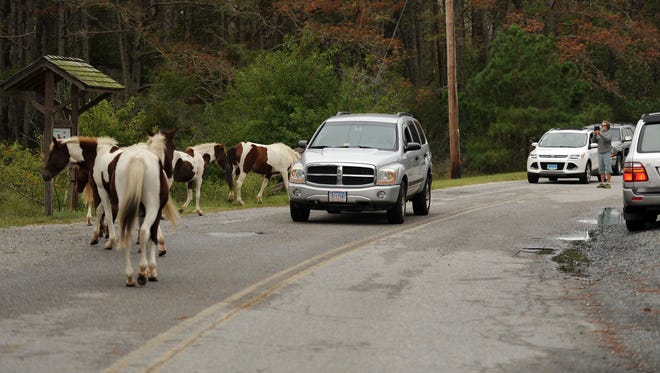Conservation lands add $230M to Virginia Shore economy, study says
 Carol Vaughn
Carol Vaughn
A new study shows conserved lands on Virginia's Eastern Shore were associated with more than $230 million in economic activity in the region last year.
The study looked at three sources of economic activity — organizations involved in land conservation; the aquaculture industry; and tourism focused on outdoor recreation.
The Center for Regional Analysis at George Mason University and Urban Analytics Inc. conducted the study.
Their assignment was to research how land conservation programs and practices on the Eastern Shore of Virginia affect the local economy.
"What we would tell you is that, from an economic development perspective, I do not see indications that you have any displacement ... We did not see where there is industrial activity being netted out. We do see a positive economic impact that comes from the activities that are associated with conserved lands," said Terry L. Clower of George Mason University.

Clower presented the findings to the Accomack County Board of Supervisors in August.
Researchers conducted an economic and fiscal analysis to quantify the impact of conserved lands on Accomack and Northampton counties' budgets.
About one third of land on Virginia's Eastern Shore is conserved, with another 10 percent in conservation easements, according to the study.
Organizations involved in land conservation on Virginia's Eastern Shore generated nearly $22 million in economic activity, $355,000 in local taxes, $329,000 in state taxes and 226 jobs in the region last year.
Those organizations include nonprofits, park operations, and ecotourism operators who would not be located on the Eastern Shore without conserved lands.
Aquaculture was included in the study because it is supported by improved water quality that is at least partly attributable to land conservation, Clower said.
The aquaculture industry's share of the total impact cited in the study was by far the largest, at nearly $157 million.
The industry generates about $3.7 million in local taxes annually, $2.9 million in state taxes and 635 jobs, the study found.
READ MORE: Scientists hope concrete 'castles' will save shoreline, help oysters
READ MORE: Tourism brings millions to Virginia Shore economy
Tourism spending associated with conserved land resulted in more than $51 million in economic activity, and about $2.2 million in tax revenue to the two Shore counties, along with another $1.4 million in state taxes. It was also associated with 655 jobs.
Still, Accomack and Northampton counties forgo thousands of dollars in taxes each year due to conservation easements because the lands have a lower land use value tax assessment.
The amount forgone in Accomack County last year was around $79,000; it was almost $284,000 in Northampton County, according to the study.
However, the study found for every $1 spent in Accomack County to provide public services for land in conservation easement, an estimated $2.38 in revenues came to the county.
In Northampton County, revenues to the county were estimated to be $1.15 for every $1 spent to provide public services to support land in conservation easement.
"The findings of the fiscal impact model indicate that lands with conservation easements do not place a fiscal burden on either county," the final project summary said.
"You're preaching to the choir with me," said Supervisor Grayson Chesser, who said he has put his farmland in a conservation easement.
"I think your figures are probably very, very conservative ... They're very conservative, because if you develop these low-lying areas, the cost to the county would be astronomical" ultimately because of storms, road flooding and the like, Chesser said.
The study was funded by the Virginia Coastal Zone Management Program at the Department of Environmental Quality.
The complete 100-page study can be viewed on the Accomack County website in the Board of Supervisors meeting agenda for Aug. 16.
On Twitter @cvvaughnESN
443-260-3314